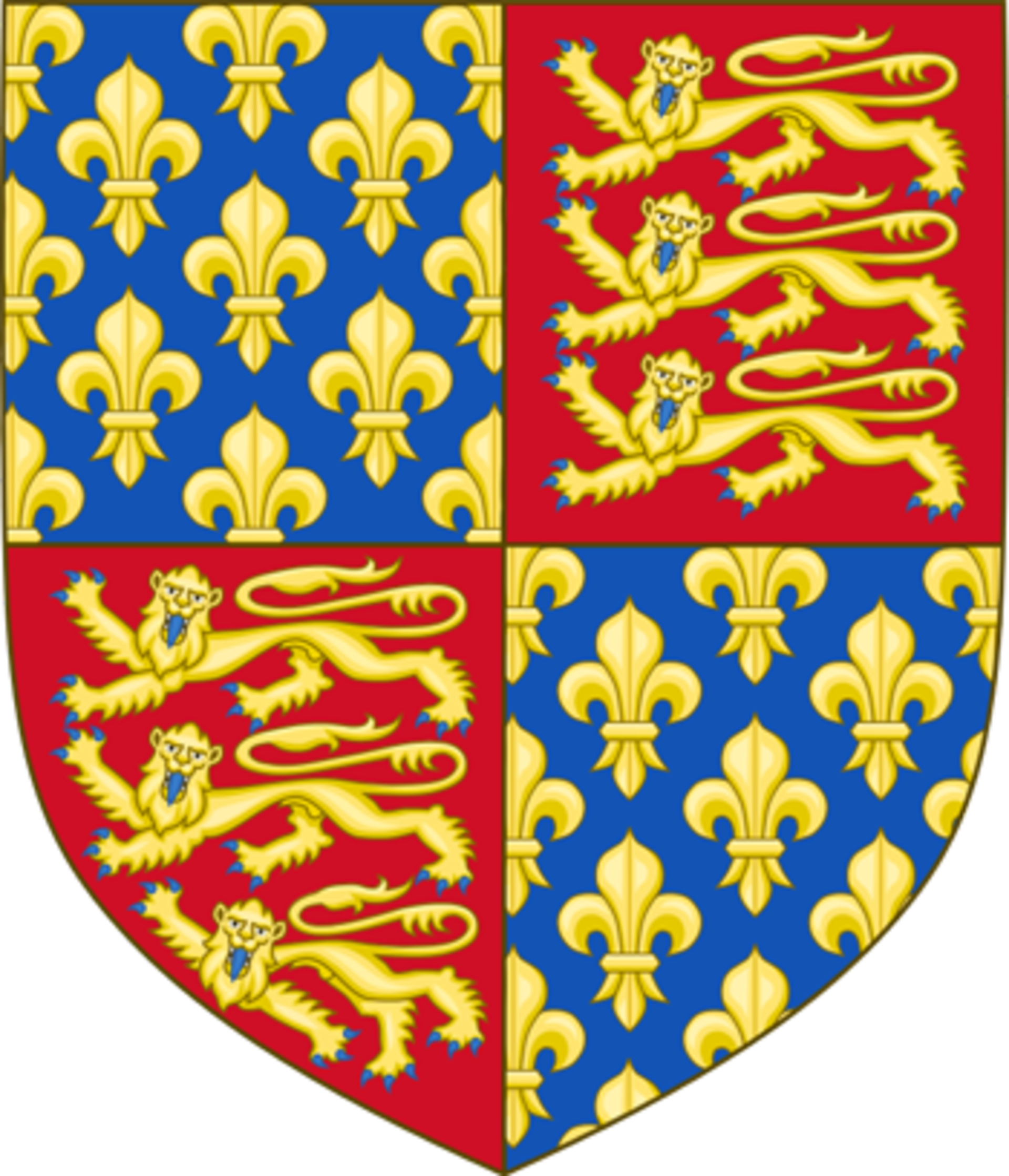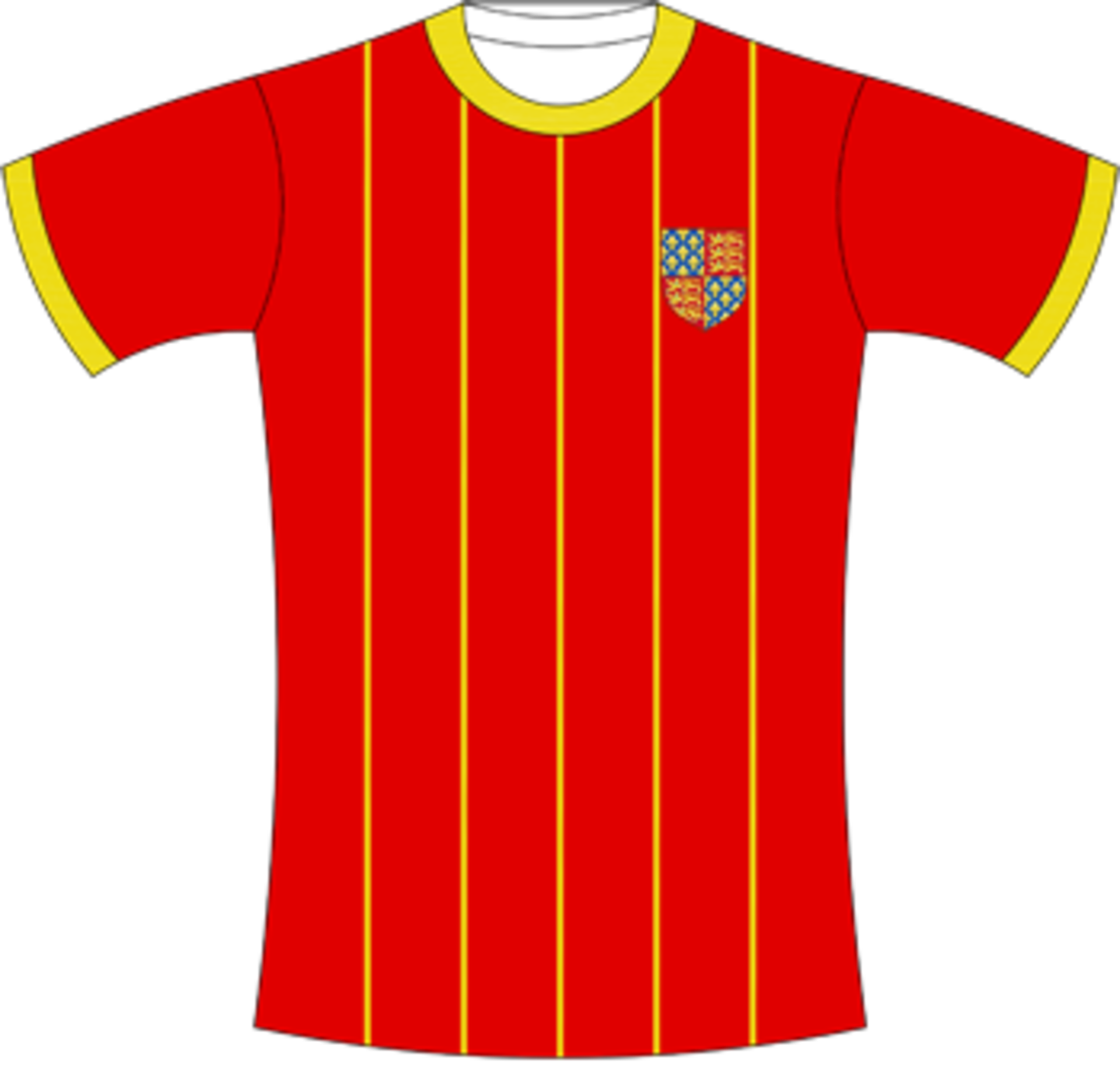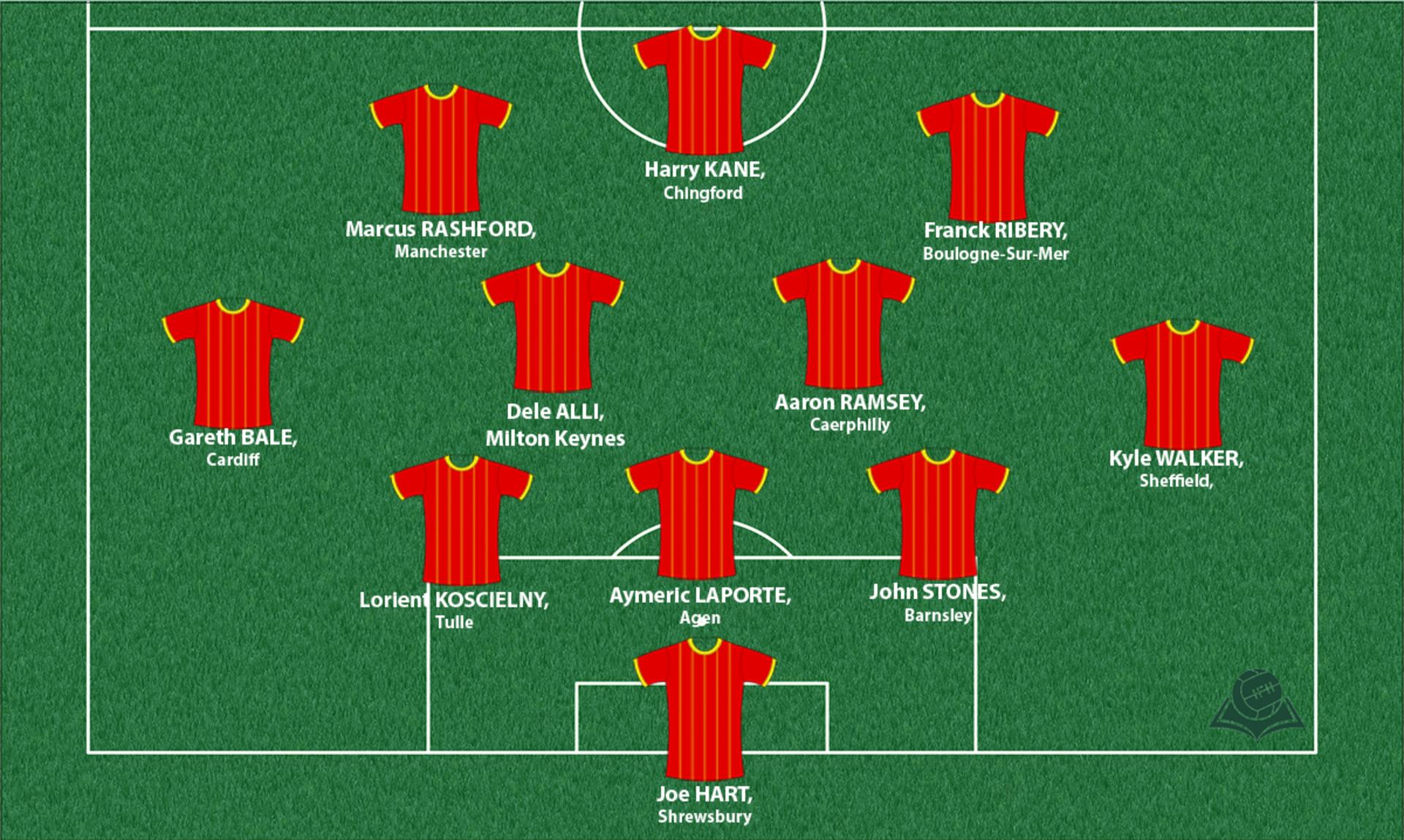The Kingdom of England
Throughout the developed Middle Ages (and later) England remained at war. At the same time, when they were not at war against France, the English warred against the Scots, the Irish, and the Welsh. When, in fact, they were not at war against those countries, the English were at war among themselves in a series of wars for the crown.

Coat of arms

Shirt
| Position | First name | Last name | Mjesto rođenja | Like | Dislike | |
|---|---|---|---|---|---|---|
| GK | Jack | BUTLAND | Bristol |
7 |
2 |
|
| GK | Joe | HART | Shrewsbury |
14 |
6 |
|
| GK | Jordan | PICKFORD | Washington |
28 |
9 |
|
| DC | Aymeric | LAPORTE | Agen |
13 |
1 |
|
| DC | Chris | SMALLING | London |
6 |
9 |
|
| DC | Gary | CAHILL | Dronfield |
8 |
3 |
|
| DC | Lorient | KOSCIELNY | Tulle |
3 |
5 |
|
| DRC | Joe | GOMEZ | Catford |
2 |
0 |
|
| DRC | John | STONES | Barnsley |
19 |
1 |
|
| DR | Nathaniel | CLYNE | Stockwell |
3 |
1 |
|
| DR/MR | Kyle | WALKER | Sheffield |
17 |
3 |
|
| DL | Danny | ROSE | Doncaster |
10 |
4 |
|
| DL | Ryan | BERTRAND | Southwark |
3 |
2 |
|
| DRC/DMC | Eric | DIER | Cheltenham |
18 |
3 |
|
| DMC | Jordan | HENDERSON | Sunderland |
23 |
6 |
|
| MC | Jack | WILSHERE | Stevenage |
8 |
8 |
|
| MRLC | Aaron | RAMSEY | Aaron |
14 |
0 |
|
| AMC | Adam | LALLANA | St.Albans |
11 |
11 |
|
| AMC | Dele | ALLI | Milton Keynes |
22 |
8 |
|
| AMC | Mathieu | VALBUENA | Stevenage |
1 |
1 |
|
| AMC | Ross | BARKLEY | Liverpool |
6 |
3 |
|
| AMRLC | Alex | OXLADE-CHAMBERLAIN | Portsmouth |
12 |
1 |
|
| AMRL | Franck | RIBERY | Boulogne-Sur-Mer |
2 |
2 |
|
| AMRL | Gareth | BALE | Cardiff |
22 |
2 |
|
| AMRL | Nathan | REDMOND | Birmingham |
5 |
0 |
|
| AMR/DR | Michail | ANTONIO | London |
5 |
3 |
|
| AMRL/FC | Theo | WALCOTT | Stanmore |
5 |
2 |
|
| SS/FRLC | Wayne | ROONEY | Liverpool |
21 |
5 |
|
| FRLC | Daniel | STURRIDGE | Birmingham |
15 |
4 |
|
| FRLC | Danny | WELBECK | Manchester |
6 |
2 |
|
| FRLC | Marcus | RASHFORD | Manchester |
19 |
3 |
|
| FC | Harry | KANE | Chingford |
20 |
4 |
|
| FC | Jamie | VARDY | Sheffield |
14 |
3 |
(Today part of: England, Wales, region Nord-Pas de Calais and New Aquitaine in France)
From the fact that the King of England laid feudal rights to numerous territories in France rose a conflict between these two countries in the first half of the 14th century which is going to, with rare periods of peace, be stretched over more than a century (1337-1453), and it will, in fact, be comprised of a series of individual wars. The struggle involved several generations of English and French claimants to the crown and actually occupied a period of more than 100 years. Although, there had been periodic fighting over the question of English fiefs in France going back to the 12th century. During this period war successes were variable and English forces even had occupied the area around Paris. But int he end, England was defeated. After the Hundred Year War English monarchs finally cured of their taste for continental intervention, and the they turned increasingly to the problems of internal development.
English king also lead the battles on the Isle. And while the control over Ireland and Wales was important for trade and security, Scotland was seen as the natural ally of the French. In the rural parts of England, the factual rule was in the hands of the high nobility, the descendants of the men that forced the Magna Carta on the king (1215), as well as the thousands of landowners and innumerable legal entities, both those of the Church and secular ones. The Church was not under the crown’s control until the 16th century. Cities were often self-governed and, which is crucial, the most important trading center in the country – London City – was completely autonomous. There is proof that among the common populace in medieval England there was already, to a greater or smaller extent, “something akin to the modern national patriotism.” The borders of England had not changed for centuries, the king’s power was limited by the Parliament, a common language had been developed, as well as literature, unity of courts, the tax system and, perhaps what is the most important factor, the sense of historical unity and community – the sentiment that gained strength first in the Hundred Years’ War and the anti-French climate, and in the later centuries due to the dangers posed by the foreign military (Spanish) and religious (the pope) powers.
Sources
- Adrian HASTINGS, Gradnja nacionaliteta , Rijeka, 2003.,57
- Niall FERGUSON, Civilizacija: Zapad i ostali, Zagreb, 2012.,54-55
- ''Bitka kod Agincourta'', http://www.velikabritanija.net/2009/12/16/bitka-kod-agincourta-agincourt/
- ''Hundred Years’ War'', https://www.britannica.com/event/Hundred-Years-War
-
Coat of arms: https://en.wikipedia.org/wiki/Royal_Arms_of_England
